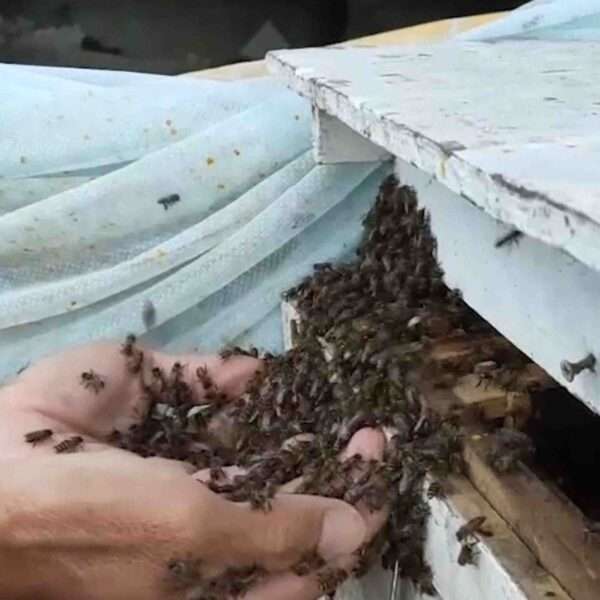Beekeepers in southern Styria say they had to provide their colonies with more sugar than ever before to ensure their survival during this year’s rainy spring.
Johann Zwetti, who heads the Association of Apiarists in Leibnitz, Austria, said: “The conditions in spring were difficult for bees.”
Speaking to the MeinBezirk news website, Johann added: “We had to feed them to ensure they don’t die. We never needed as much sugar as this year.”
Johann did not elaborate on the exact amount of sugar.
Providing the bees with sugar is a “valuable management tool”, according to Australian apicultural consultant Dr Doug Somerville.
In a fact sheet for the New South Wales Department of Primary Industries, the Canberra-based specialist explained: “The supply of white sugar (sucrose) to honeybee colonies can be a valuable management tool for beekeepers.”

He added: “It is used to supplement a shortage of stored honey to prevent starvation of the colony or to stimulate a colony to artificially promote breeding.”
Meanwhile, Johann from the Association of Apiarists in the Austrian town of Leibnitz praised his bees for their “enormous capabilities.”
He said they put in some real effort to produce as much honey as possible after the many weeks of unusually cold weather this spring.
However, he made clear: “This year’s harvest isn’t even half of our annual average.”
The Leibnitz Association of Apiarists was founded in 1905. It currently consists of around 100 active members.
Apart from a few professional honey farms, beekeeping is a leisure activity for most of Austria’s apiculture enthusiasts.
Most beekeepers can be found in the states of Upper Austria and Lower Austria. In 2021, Austria’s apiarists were in charge of 456,000 colonies.
Honeybees play an important role in the environment due to their pollination efforts. A worker bee carries out up to 10 exploration flights per day. It visits up to 300 plants and flowers during each of them.











